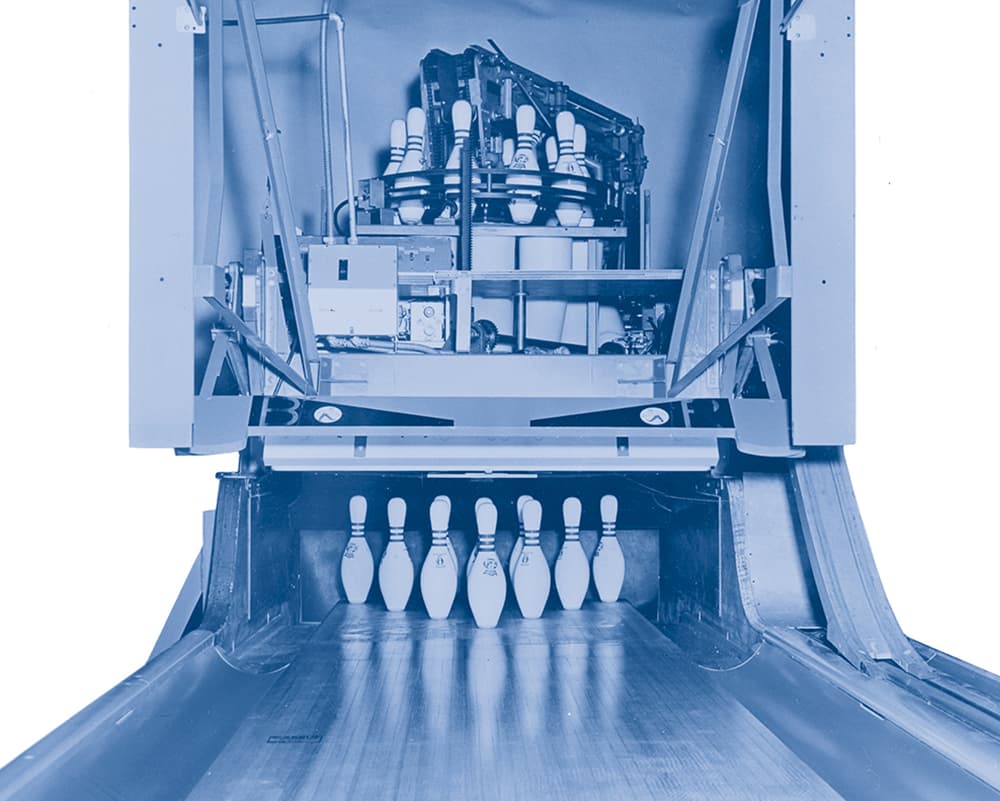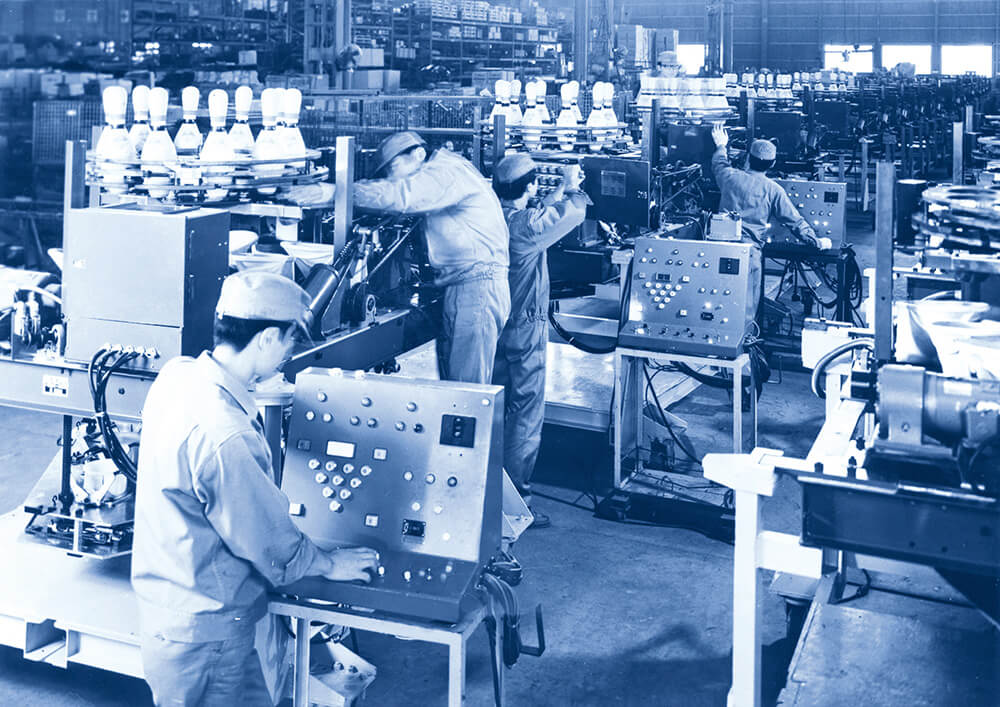A Photographic History of DaifukuRapid Growth as Bowling Boomed in Popularity

Bowling became very popular in Japan from the early 1960s onwards. The boom reached its peak in 1972 when as many as 10 million people played. The Daifuku bowling machine helped to sustain this bowling craze.
Back in the early 1960s, bowling had already become very popular in the U.S. We predicted that the American craze was bound to catch on in Japan as well and formed a technical alliance with Bowl-Mor Company, Inc., U.S. We obtained around ten thousand sheets of blueprints and set to work on manufacturing bowling machines in Japan. In 1963, we successfully completed production of the first Japanese-made ten-pin bowling machine at our brand-new Komaki Plant (today’s Komaki Works in Komaki, Aichi Prefecture). Bowling machines are built using the same technologies as material handling systems, they make use of both conveyor and automatic control. The fact that, unlike build-to-order products such as conveyors, they are build-to-stock items made them an attractive prospect to our management.
We supplied machines to bowling alleys nationwide, and a particularly memorable customer was the 120-lane Shinagawa Bowling Center in Tokyo, the biggest bowling alley in the world at the time. Prime Minister Hayato Ikeda’s daughter bowled the first ball at the opening ceremony, after which more than a hundred players simultaneously released their bowling balls and all the machines came into operation at once. It was described by people present as “a truly magnificent and thrilling spectacle.”
Our bowling business expanded steadily thanks to the booming popularity of the pastime. At its peak, it had grown to represent more than 70% of our sales. The popularity of bowling later declined rapidly, and there was a big drop in our sales and profits as well. However, we put the profits we had made to good use and secured a large factory site in Hino, Shiga Prefecture, where our current mother factory is located, and also made upfront investments in the computer and electronics sectors. Our steady investments on the future prospects we had identified became a driving force behind Daifuku’s tremendous progress going forward. Once the bowling boom had died down, we returned our business activities to our original specialization of material handling systems.

- *This article is based on the content of documents such as “Hini Arata Nari: 50 Years of Daifuku History.”
